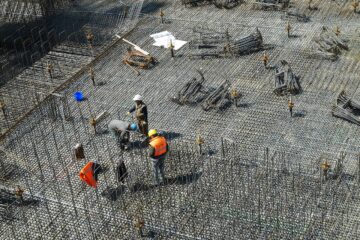![]()
Introduction:
This case is concerned with the grant of compensation to the victims of the accident in response to the civil suit filed under section 166 of the Motor Vehicle Act, 1939. In this case, the court has efficiently applied the principle of multiplier, which though is subjected to the facts of the case. The court, in this case, has dealt with the concept of contributory negligence.
Facts
In this case, there are three appellants/claimants who had sustained grievous injuries in an accident dated 14/08/2002. As the names of all the three appellants are not disclosed, I would be using symbolic names i.e. A1, A2, A3 to simplify the nature of facts. So the relevant facts are stated as under:
- All the three appellants were pushing a punctured motorcycle on the left side of the road. When they approached near Coper Petrol Bunk, situated opposite to Jai Hind Hotel, a tractor-trailer coming from an opposite direction in a rash and negligent manner, collided with the motorcycle of appellants, ultimately resulting into appellants sustaining grievous injuries.
- Appellants work as vegetable vendors. The income of A1, as stated by him, is Rs. 10000 per month but the court found his income to be 6500 only. The income of A2 and A3 is 6500 and 4246 respectively.
- So, the appellants filed a civil suit claiming compensation under section 166 of the Motors Vehicle Act, 19391 before a tribunal at Chitradurga. Not being satisfied by the award granted by the tribunal, the appellants approached the Hon’ble HC of Karnataka and thereafter they approached the supreme court questioning the correctness of the decision of Karnataka HC.
Issues
1. Whether the HC of Karnataka has erred in its decision for deciding the percentage of disability and awarding compensation?
2. If yes, then what is the correct percentage of disability and what should be the compensation for all the three appellants, deciding one appeal at a time?
Holding
With regard to issue 1, the court has categorically made it clear that HC has erred in its decision in two aspects. First, to hear all the three appeals as one because the three appellants have sustained injuries of varying degrees, therefore, all the three appeals should be heard separately. Secondly, HC has erred in determining the disability percentage of the claimants i.e. 65% for A1, 25% and 13% for A2 and A3 respectively. The SC in its decision held that the disability percentage for A1, A2 and A3 as 85%, 35% and 85% respectively.
The court while applying the principle of multiplier and taking into consideration various other factors has granted compensation as follows:
- Rs. 21,65,100 to A1 with interest @ 9% per annum from the date of application to date of payment.
- Rs. 9,77,100 to A2 with interest @ 9% per annum from the date of application to date of payment.
- Rs. 15,67,000 to A3 with interest @ 9% per annum from the date of application to date of payment.
In the grant of these awards, the court had taken into consideration the correlation between the injury sustained in an accident and subsequent loss of money i.e. capacity to earn in future.2
Rationale
Since this case is concerned with granting of an award of compensation to the victim of the accident, the court reasoning was that the compensation provided to the victim should not be more or less than what is required to meet the ends of justice.3By taking into consideration all the factors including the injuries sustained by al the claimants, their nature of the job and their subsequent capacity to earn money in future and their right to livelihood, the court granted to them respective compensation in order to dispense justice.
Obiter Dictum
The first and basic observation of the court was regarding the nature of work of the appellants. The court observed that since they are vegetable vendor they require to move from one place to another in order to earn money and live their life. This observation helped the court to determine their loss of earning capacity in future and, thereby, granting them compensation.
The second observation was regarding the determination of their salaries on a monthly basis. The court observed that the income of the appellant, as determined by the Karnataka HC, which was reduced to 3500 for the want of evidence was wrong as the appellants are employed in the unorganized sector and therefore it is not possible for anyone employed in this sector to produce proof of their income. This position has been also approved by the SC in various other cases as well.4 The court also observed that while calculating the compensation the courts have to bear in mind various factors like the age of the victim at the time of accident, marriage prospects etc.5
Some Important Concepts
Before ending this discussion I would like to shed some light on some of the most important concepts used by the court in determining the compensation in cases of accident.
Multiplier Concept
The concept of multiplier was propounded by the SC in Sarla Verma v. Delhi Transport Corporate.6. However, the choice of the multiplier has to be used keeping in mind the age of the victims. The table for the use of multiplier is provided as hereunder:
Multiplier Table in Claim Cases under Section 1667
| Age of the Victim | Multiplier to be adopted for accidents |
| Up to 15 years | 15 |
| 15 to 20 years | 16 |
| 21 to 25 | 17 |
| 26 to 30 | 18 |
| 31 to 35 | 17 |
| 36 to 40 | 16 |
| 41 to 45 | 15 |
| 46 to 50 | 13 |
| 51 to 55 | 11 |
| 56 to 60 | 8 |
| 61 to 65 | 5 |
| Above 65 | 5 |
In the process of determining the impact of disability in capacity to earn the court has to keep in mind three factors, which are as follows:
- What the claimant can do and can not do after the accident.
- The second step is to ascertain his nature o work and age at the time of the accident.
- The third step is to determine the capability to work after the accident i.e. whether he can do the work, whether he can do the work partially or whether he can not do the work.
Contributory Negligence
As the word suggests that it is something related to the contribution of one party to the act which has resulted in the act. In other words, there is a fault of both the parties that have resulted in the act8. In the instant case, it was alleged by the respondent that it is the case of contributory negligence as they were pushing the bike in the middle of the road. But the court rejected this contention as they said that simply because the accident took place in the middle of the road we can’t say that the appellant was negligent as there is no proof to supplement it.
Conclusion
This case is concerned regarding the compensation granted to the victims. I appreciate the fact that court has taken a lenient side on the victims because generally, since they are not able to produce their proofs, especially when they belong to vulnerable sections, so the case is either dismissed or the compensation provided is very less due to the inefficiency of proofs. Also, I would like to point the use of multiplier as it should be changed because it is based on the standard of living as per section 163(b) which was fixed in 1994 and since then no legislator has given a second eye to this.
References:
- 166. Application for compensation.—
(1) An application for compensation arising out of an accident of the nature specified in sub-section (1) of section 165 may be made—
(a) by the person who has sustained the injury; or
(b) by the owner of the property; or
(c) where death has resulted from the accident, by all or any of the legal representatives of the deceased; (d) by any agent duly authorised by the person injured or all or any of the legal representatives of the deceased, as the case may be: Provided that where all the legal representatives of the deceased have not joined in any such application for compensation, the application shall be made on behalf of or for the benefit of all the legal representatives of the deceased and the legal representatives who have not so joined, shall be impleaded as respondents to the application. 1[(2) Every application under sub-section (1) shall be made, at the option of the claimant, either to the Claims Tribunal having jurisdiction over the area in which the accident occurred, or to the Claims Tribunal within the local limits of whose jurisdiction the claimant resides or carries on business or within the local limits of whose jurisdiction the defendant resides, and shall be in such form and contain such particulars as may be prescribed: Provided that where no claim for compensation under section 140 is made in such application, the application shall contain a separate statement to that effect immediately before the signature of the applicant.] 2[***] 3[(4) The Claims Tribunal shall treat any report of accidents forwarded to it under sub-section (6) of section 158 as an application for compensation under this Act.]
- Raj Kumar Vs. Ajay Kumar (2011) 1 SCC 343; Mohan Soni vs. Ram Avtar Tomar and Ors. (2012) 2 SCC 267
- State of Haryana Vs. Jasbir Kaur (2003) 7 SCC 484
- Ramchandrappa v. Manager, Royal Sundaram Alliance Company Limited (2011) 13 SCC 236
- Santosh Devi v. National Insurance Company Limited (2012) 6 SCC 421
- (2009) 6 SCC 121
- sarthak modi, Guidelines on compensation for motor accident claims, December 22, 2017, https://blog.ipleaders.in/sc-guidelines-on-compensation-in-motor-accident-claims/
- https://www.britannica.com/topic/contributory-negligence.



0 Comments